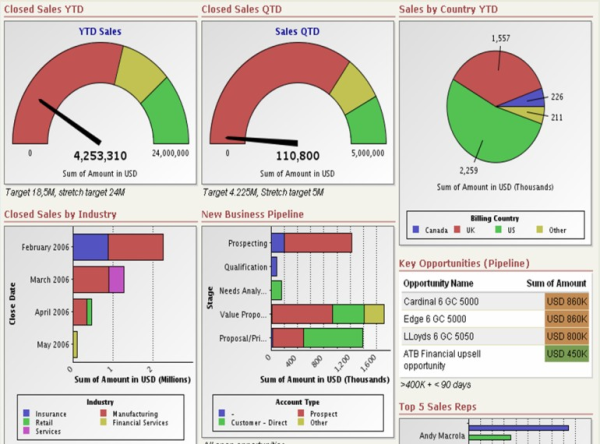Question: If you had one lesson for a business to learn and implement what would it be?
Answer: Measure, Measure, Measure! I’m reminded of this especially this week as I meet with several of my clients who are being challenged by people they hired. Before you hire make sure you have measurements in place. Establish the 5-7 specific measureable accountabilities for the position you are hiring for and look for their qualifications to meet these in your interview process.
 While you can’t expect a new hire to immediately hit the targets you expect, you should expect them to reach them rather quickly if they have the qualification you set out for them in your Job Summary Scorecard. Have a 90 day ramp up period with specific metrics for them to reach so they immediately are aware of your expectations. Very often failure to meet your metrics is the first sign you’ve made a hiring mistake. You miss that leading indicator if you’ve not established performance metrics for the position in your 90 day training and orientation period. Once an employee is in place, your metrics will tell you when something is going wrong. Not hitting metrics is a sign something is amiss. It could be a health issue, family problems, conflict with a fellow employee, or a system failure. Metrics not being hit demands inspection.
While you can’t expect a new hire to immediately hit the targets you expect, you should expect them to reach them rather quickly if they have the qualification you set out for them in your Job Summary Scorecard. Have a 90 day ramp up period with specific metrics for them to reach so they immediately are aware of your expectations. Very often failure to meet your metrics is the first sign you’ve made a hiring mistake. You miss that leading indicator if you’ve not established performance metrics for the position in your 90 day training and orientation period. Once an employee is in place, your metrics will tell you when something is going wrong. Not hitting metrics is a sign something is amiss. It could be a health issue, family problems, conflict with a fellow employee, or a system failure. Metrics not being hit demands inspection.
Metrics reached build momentum. Pearson’s Law is a powerful force that drives business growth.
The critical lesson I would instruct every business to learn and implement reverberates in my head from a quote from Michael Gerber, “You can’t manage what you don’t measure, and what you don’t measure you don’t understand.”
The quote suggests that if you’re not measuring it you don’t understand it. Where is that true in your business? Do your people argue with you that you can’t measure what I do? That comment suggests your people may be afraid of punishment as I pointed out in You Can’t Measure What I Do – Measuring Performance.
I can guarantee whatever part of your business you are not measuring will eventually rear up and kick your tail. How far and how much damage it will do is something you will measure if not quantitatively, then certainly in sleepless nights and emotional distress. Ask any business owner who’s gone out of business. They’ll testify that not measuring is a sure path to failure.
It’s not just important to have measurements, it’s important to have measurements that forecast problems. At Gazelles we call these Key Performance Indicators leading and lagging indicators. We recommend that where ever possible you have two leading [predictive] indicators to one lagging indicator [historical].
As Verne mentions in Mastering the Rockefeller Habits, the two critical leadership skills are delegating and forecasting. Without measurement you can’t forecast. In fact even with Key Performance Indicators the best leaders are challenged to predict their industries direction. A recent article on Dell questioned Michael Dell’s leadership capabilities set Dell course in the right direction. If top leaders like Michael Dell are challenged to envision their future with all the complexities and measurements he has at his disposal, how more difficult is it for you in your business?
What measurements do you have in place for your business? Which are critical for you as the CEO/President to be aware of? Which, if not monitored would impact your business most? Which measurements are you key positions accountable for?
 One of the first tools we help our Gazelles clients to complete is an organizational strategy that identifies their key seats. With this clarity in place we immediately identify leading and lagging indicators in order to ensure we are keyed in on their performance and the key performance indicators for the company.
One of the first tools we help our Gazelles clients to complete is an organizational strategy that identifies their key seats. With this clarity in place we immediately identify leading and lagging indicators in order to ensure we are keyed in on their performance and the key performance indicators for the company.
Your role as the Owner/CEO/President of your business is to be above the day to day operations. To be in a position like an air traffic control operator who can objectively view events, results and procedures and then direct the correct measure be taken to continuously manage and lead your business in the direction of your vision.
Measuring your business is not an ultimate panacea. Leading a business is a complex and demanding position. When you are in command of the numbers, measuring and quantifying performance, you can forecast and direct your business toward your goals. It’s a critical step in a successful enterprise. Strategic Discipline as taught by Positioning Systems focuses on priorities, metrics and meetings. These critical disciplines require measuring what you manage to eliminating any obscurity that hinders performance.
Identifying key metrics is the critical step to putting your business on the path toward your vision.
What can you measure? Click here to instantly recieve a list of indicators to consider measuring in your business.
..my purpose is first to remind you of the power of scores. The old truisms tell us that “what gets measure gets managed” and “you get what you inspect,” and they survive as truisms because they are manifestly true.
And second, to suggest that it is your responsibility as a leader to sort through all the many things that can be measured and identify the one score that we, your followers, should focus on. If you want us to follow you, you must tell us what score we should use to measure our progress into the forest of the future. This forest is dark and deep, and therefore unnerving, and so you must tell us the core score that will reveal how far we have all come, and how far we have yet to go.
- Marcus Buckingham, The One Thing You Need to Know
“TheU.S.is the most competitive of nations, a nation where in Vince Lombardi’s words, ‘Winning isn’t everything. It’s the only thing.’ Why this preoccupation with scores? Because competitors love scores. If you can measure it, you can compare it, and if you can compare, you can compete, and If you can compete, you can win. America’s core strength is not trying, but winning—look here are the heroes and their scores to prove it.
- Marcus Buckingham, The One Thing You Need to Know
"When performance is measured, performance improves. When performance is measured and reported back, the rate of improvement accelerates."
-Karl Pearson, Pearson’s Law; Thomas S. Monson, author
What can you measure? Click here to instantly recieve a list of indicators to consider measuring in your business.
